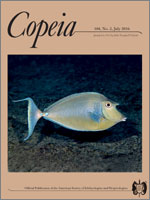The Pugnose Eel, Simenchelys parasitica (family Synaphobranchidae, subfamily Simenchelyinae), is a deep-water species described as both being a parasite and a scavenger that can bite off large chunks of flesh. Little, however, is known about its cranial morphology, including to what degree its feeding apparatus is modified to allow feeding specializations. We provide a detailed description of the cranial morphology of S. parasitica, comparing it with that of more closely related synaphobranchid species, for which no parasitic behavior has been reported, i.e., Ilyophis brunneus (Ilyophinae) and Synaphobranchus brevidorsalis (Synaphobranchinae). Pugnose Eels have stretchable skin around a small, terminal mouth, as well as teeth with a clear cutting edge, a mouth-closing apparatus equipped with large jaw muscles, a large tongue-like secretory structure, and well-developed hyoid and branchial arches to facilitate the transport of large food items in the buccal cavity. A comparison with other species provides several lines of evidence supporting the hypothesis that Pugnose Eels have a feeding apparatus that is equipped for biting off chunks of flesh from prey (irrespective of whether prey is dead or alive), most likely by using rotational feeding.
BioOne.org will be down briefly for maintenance on 17 December 2024 between 18:00-22:00 Pacific Time US. We apologize for any inconvenience.
How to translate text using browser tools
6 June 2016
Functional Morphology of the Feeding Apparatus in Simenchelys parasitica (Simenchelyinae: Synaphobranchidae), an Alleged Parasitic Eel
Soheil Eagderi,
Joachim Christiaens,
Matthieu Boone,
Patric Jacobs,
Dominique Adriaens
ACCESS THE FULL ARTICLE





